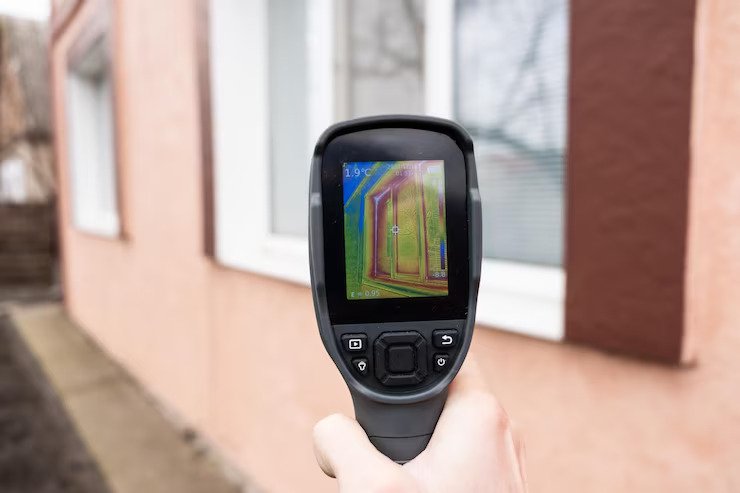How Do Outdoor Temperature Sensors Work?
17 April 2023
4 Mins Read

toc impalement
Outdoor temperature sensors are commonly used in a variety of applications, from home weather stations to industrial monitoring systems. These sensors work by detecting changes in temperature and converting that information into a measurable output signal.
Understanding how outdoor temperature sensors work can help us appreciate the technology behind modern weather monitoring and climate control systems. In this article, we’ll take a closer look at the different types of outdoor temperature sensors and how they function.
A controller is also important as it controls outside temperature sensors.
What are the different types of outdoor temperature sensors?
Outdoor temperature sensors are devices that measure the temperature outside and provide accurate temperature readings for a wide range of applications.
The different types of outdoor temperature sensors include:
- Thermistors: Thermistors are resistors that change their resistance based on temperature. They are small, inexpensive, and provide accurate readings over a wide range of temperatures. They are commonly used in outdoor weather stations and temperature monitoring systems.
- Thermocouples: Thermocouples are temperature sensors that use two wires made of different metals that generate a voltage based on the temperature difference between them. They are rugged, reliable, and can measure very high temperatures, making them ideal for outdoor use in extreme conditions.
- Resistance temperature detectors (RTDs): RTDs are temperature sensors that use a resistor made of a metal such as platinum, which changes its resistance based on temperature. They are highly accurate and have a long lifespan, but are more expensive than thermistors.
- Infrared sensors: Infrared sensors are used to measure the temperature of an object without making contact. They work by detecting the infrared radiation emitted by an object and converting it into a temperature reading. Infrared sensors are commonly used in industrial and scientific applications and can also be used outdoors for non-contact temperature measurements.
- Bimetallic strips: Bimetallic strips are made of two different metals with different coefficients of thermal expansion, which causes them to bend in response to temperature changes. They are simple and inexpensive but provide less accuracy than other types of outdoor temperature sensors.
Each of these types of outdoor temperature sensors has its own advantages and disadvantages, and the choice of which sensor to use depends on the specific application and requirements of the user.
Where is the outdoor temperature sensor?
The outdoor temperature sensor is typically located outside a building or in a designated outdoor space. Its precise location can vary depending on the specific building and the system being used, but it is typically placed in a location that provides an accurate representation of the outdoor temperature.
In residential settings, the outdoor temperature sensor is often installed on the north-facing side of the home, as this area receives less direct sunlight and thus provides a more accurate reading of the outdoor temperature. Other factors that can impact the sensor’s location include the presence of trees or other obstructions that can block direct sunlight or cause other temperature fluctuations.
In commercial or industrial settings, the outdoor temperature sensor may be located on the roof or other elevated areas. This can provide a better representation of the temperature at a higher altitude where wind and other weather patterns can be more significant.
Tips For Buying The Best Outdoor Temperature Sensors
When it comes to outdoor temperature sensors, different types have their own strengths and weaknesses. Choosing the best type depends on your specific needs and the environment in which the sensor will be installed. There are a few tips you should keep in mind to ensure that you make the right choice.
Here are some things to consider:
- Accuracy: One of the most important factors when it comes to temperature sensors is accuracy. Look for sensors with a high level of accuracy, as even small variations can affect your data.
- Durability: Outdoor temperature sensors need to be able to withstand harsh weather conditions such as rain, wind, and extreme temperatures. Make sure that the sensor you choose is durable enough to handle these conditions.
- Wireless connectivity: Many outdoor temperature sensors come with wireless connectivity options, which allow you to monitor and access data remotely through a mobile app or web interface. Consider whether this feature is important for your needs.
- Power source: Some outdoor temperature sensors require batteries, while others may have solar panels or other power sources. Consider which option works best for your needs and location.
- Compatibility: Check that the sensor you choose is compatible with your existing monitoring system if you have one in place already.
- Price: Finally, consider the price of the sensor and whether it fits within your budget. Keep in mind that cheaper options may not always offer the same level of accuracy or durability as more expensive models.
By considering these factors when buying an outdoor temperature sensor, you can ensure that you make an informed decision and choose a device that meets your needs and performs well over time.
For example, Belimo outside temperature sensors is known for their durability whereas Veris outside temperature sensors are known for the quality and reliability of their parts. So, don’t hesitate to compare different sensors.
Conclusion
Outdoor temperature sensors play an important role in weather monitoring, climate control, and many other applications. By detecting changes in temperature and converting that information into a measurable output signal, these sensors allow us to gather valuable data and make informed decisions about how to manage our environment.
Whether you’re a weather enthusiast, an HVAC technician or just curious about how technology works, learning about outdoor temperature sensors can provide fascinating insights into the science of temperature measurement.
Read Also:


















Comments Are Closed For This Article